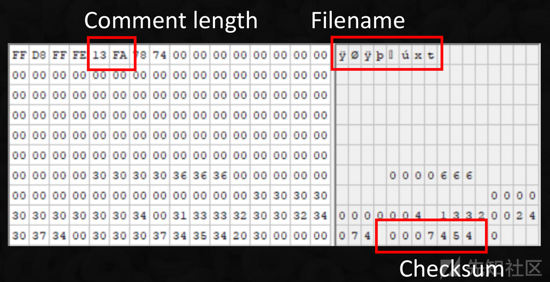可以通过一个简单的例子来说明MapReduce到底是什么:
我们要统计一个大文件中的各个单词出现的次数。由于文件太大。我们把这个文件切分成如果小文件,然后安排多个人去统计。这个过程就是”Map”。然后把每个人统计的数字合并起来,这个就是“Reduce"。
上面的例子如果在MapReduce去做呢,就需要创建一个任务job,由job把文件切分成若干独立的数据块,并分布在不同的机器节点中。然后通过分散在不同节点中的Map任务以完全并行的方式进行处理。MapReduce会对Map的输出地行收集,再将结果输出送给Reduce进行下一步的处理。
对于一个任务的具体执行过程,会有一个名为"JobTracker"的进程负责协调MapReduce执行过程中的所有任务。若干条TaskTracker进程用来运行单独的Map任务,并随时将任务的执行情况汇报给JobTracker。如果一个TaskTracker汇报任务失败或者长时间未对本身任务进行汇报,JobTracker会启动另外一个TaskTracker重新执行单独的Map任务。
下面的具体的代码实现:
1. 编写wordcount的相关job
(1)eclipse下创建相关maven项目,依赖jar包如下(也可参照hadoop源码包下的hadoop-mapreduce-examples项目的pom配置)
注意:要配置一个maven插件maven-jar-plugin,并指定mainClass
|
1
2
3
4
5
6
7
8
9
10
11
12
13
14
15
16
17
18
19
20
21
22
23
24
25
26
27
28
29
30
31
32
33
|
<dependencies>
<dependency>
<groupId>junit</groupId>
<artifactId>junit</artifactId>
<version>4.11</version>
</dependency>
<dependency>
<groupId>org.apache.hadoop</groupId>
<artifactId>hadoop-mapreduce-client-core</artifactId>
<version>2.5.2</version>
</dependency>
<dependency>
<groupId>org.apache.hadoop</groupId>
<artifactId>hadoop-common</artifactId>
<version>2.5.2</version>
</dependency>
</dependencies>
<build>
<plugins>
<plugin>
<groupId>org.apache.maven.plugins</groupId>
<artifactId>maven-jar-plugin</artifactId>
<configuration>
<archive>
<manifest>
<mainClass>com.xxx.demo.hadoop.wordcount.WordCount</mainClass>
</manifest>
</archive>
</configuration>
</plugin>
</plugins>
</build>
|
(2)根据MapReduce的运行机制,一个job至少要编写三个类分别用来完成Map逻辑、Reduce逻辑、作业调度这三件事。
Map的代码可继承org.apache.hadoop.mapreduce.Mapper类
|
1
2
3
4
5
6
7
8
9
10
11
12
13
14
15
|
public static class TokenizerMapper
extends Mapper<Object, Text, Text, IntWritable>{
private final static IntWritable one = new IntWritable(1);
private Text word = new Text();
//由于该例子未用到key的参数,所以该处key的类型就简单指定为Object
public void map(Object key, Text value, Context context
) throws IOException, InterruptedException {
StringTokenizer itr = new StringTokenizer(value.toString());
while (itr.hasMoreTokens()) {
word.set(itr.nextToken());
context.write(word, one);
}
}
}
|
Reduce的代码可继承org.apache.hadoop.mapreduce.Reducer类
|
1
2
3
4
5
6
7
8
9
10
11
12
13
14
15
|
public class IntSumReducer
extends Reducer<Text,IntWritable,Text,IntWritable> {
private IntWritable result = new IntWritable();
public void reduce(Text key, Iterable<IntWritable> values,
Context context
) throws IOException, InterruptedException {
int sum = 0;
for (IntWritable val : values) {
sum += val.get();
}
result.set(sum);
context.write(key, result);
}
}
|
编写main方法进行作业调度
|
1
2
3
4
5
6
7
8
9
10
11
12
13
14
|
public static void main(String[] args) throws Exception {
Configuration conf = new Configuration();
Job job = Job.getInstance(conf, "word count");
job.setJarByClass(WordCount.class);
job.setMapperClass(TokenizerMapper.class);
job.setCombinerClass(IntSumReducer.class);
job.setReducerClass(IntSumReducer.class);
job.setOutputKeyClass(Text.class);
job.setOutputValueClass(IntWritable.class);
FileInputFormat.addInputPath(job, new Path(args[0]));
FileOutputFormat.setOutputPath(job, new Path(args[1]));
job.waitForCompletion(true) ;
//System.exit(job.waitForCompletion(true) ? 0 : 1);
}
|
2. 上传数据文件到hadoop集群环境
执行mvn install把项目打成jar文件然后上传到linux集群环境,使用hdfs dfs -mkdir命令在hdfs文件系统中创建相应的命令,使用hdfs dfs -put 把需要处理的数据文件上传到hdfs系统中,示例:hdfs dfs -put ${linux_path/数据文件} ${hdfs_path}
3. 执行job
在集群环境中执行命令: hadoop jar ${linux_path}/wordcount.jar ${hdfs_input_path} ${hdfs_output_path}
4. 查看统计结果
hdfs dfs -cat ${hdfs_output_path}/输出文件名
以上的方式在未启动hadoop集群环境时,是以Local模式运行,此时HDFS和YARN都不起作用。下面是在伪分布式模式下执行mapreduce job时需要做的工作,先把官网上列的步骤摘录出来:
配置主机名
# vi /etc/sysconfig/network
例如:
|
1
2
3
4
5
|
NETWORKING=yes
HOSTNAME=master
vi /etc/hosts
|
填入以下内容
127.0.0.1 localhost
配置ssh免密码互通
ssh-keygen -t rsa
# cat?~/.ssh/id_rsa.pub?>>?~/.ssh/authorized_keys
配置core-site.xml文件(位于${HADOOP_HOME}/etc/hadoop/
|
1
2
3
4
5
6
|
<configuration>
<property>
<name>fs.defaultFS</name>
<value>hdfs://localhost:9000</value>
</property>
</configuration>
|
配置hdfs-site.xml文件
|
1
2
3
4
5
6
|
<configuration>
<property>
<name>dfs.replication</name>
<value>1</value>
</property>
</configuration>
|
下面的命令可以在单机伪分布模式下运行mapreduce的job
1.Format the filesystem:
$ bin/hdfs namenode -format
2.Start NameNode daemon and DataNode daemon:
$ sbin/start-dfs.sh
3.The hadoop daemon log output is written to the $HADOOP_LOG_DIR directory (defaults to $HADOOP_HOME/logs).4.Browse the web interface for the NameNode; by default it is available at:
NameNode – http://localhost:50070/
Make the HDFS directories required to execute MapReduce jobs:
$ bin/hdfs dfs -mkdir /user
$ bin/hdfs dfs -mkdir /user/<username>
5.Copy the input files into the distributed filesystem:
$ bin/hdfs dfs -put etc/hadoop input
6.Run some of the examples provided:
$ bin/hadoop jar share/hadoop/mapreduce/hadoop-mapreduce-examples-2.5.2.jar grep input output 'dfs[a-z.]+'
7.Examine the output files:
Copy the output files from the distributed filesystem to the local filesystem and examine them:$ bin/hdfs dfs -get output output
$ cat output/*
orView the output files on the distributed filesystem:
$ bin/hdfs dfs -cat output/*
8.When you're done, stop the daemons with:
$ sbin/stop-dfs.sh
总结
以上就是本文关于hadoop的wordcount实例代码的全部内容,希望对大家有所帮助。感兴趣的朋友可以继续参阅本站其他相关专题,如有不足之处,欢迎留言指出。感谢朋友们对本站的支持!
原文链接:https://www.cnblogs.com/hzhuxin/p/4995629.html
相关文章
- ASP.NET自助建站系统中如何实现多语言支持? 2025-06-10
- 64M VPS建站:如何选择最适合的网站建设平台? 2025-06-10
- ASP.NET本地开发时常见的配置错误及解决方法? 2025-06-10
- ASP.NET自助建站系统的数据库备份与恢复操作指南 2025-06-10
- 个人网站服务器域名解析设置指南:从购买到绑定全流程 2025-06-10
- 2025-07-10 怎样使用阿里云的安全工具进行服务器漏洞扫描和修复?
- 2025-07-10 怎样使用命令行工具优化Linux云服务器的Ping性能?
- 2025-07-10 怎样使用Xshell连接华为云服务器,实现高效远程管理?
- 2025-07-10 怎样利用云服务器D盘搭建稳定、高效的网站托管环境?
- 2025-07-10 怎样使用阿里云的安全组功能来增强服务器防火墙的安全性?
快网idc优惠网
QQ交流群
-
攻击者是如何将PHP Phar包伪装成图像以绕过文件类型检测的(推荐)
2025-05-29 106 -
2025-05-29 91
-
2025-05-29 103
-
2025-05-29 95
-
2025-06-04 27










